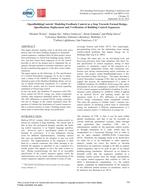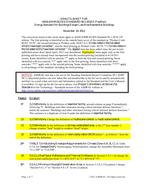In the United States, compartmentalization measurement of individual unit total leakage is the most common method of air leakage testing multifamily buildings. There are several advantages to this method: (1) The measurement includes interior leakage, which affects contaminant and sound transfer; (2) the test is easier to perform than others; (3) many people are qualified to perform the test; and (4) units can be tested earlier in the construction process than with other methods. However, exterior leakage has the greatest impact on energy performance. Energy models sometimes use the total leakage multiplied by the ratio of the exterior to total envelope surface area to estimate the exterior leakage, but measurements show that the method can yield inaccurate results. Guarded test methods can measure exterior leakage but are more difficult to perform.
This paper evaluates the use of pressure changes in adjacent units during compartmentalization tests to estimate exterior leakage. An equation derived for two adjacent units with equal leakage was extended for multiple adjacent units. Further, a series of equations was derived to relate the air leakage measurements and pressure changes in adjacent units to the exteriorleakage of the tested unit. The matrix of equations can be used to directly compute the exterior leakages without needing to assume that they are equal.
Compartmentalization tests and adjacent unit pressure measurements were conducted for 68 units in five garden-style (i.e., separate entries) multifamily buildings. Exterior leakage measurements from guarded tests were compared to values from compartmentalization tests using the two computation methods — one assuming equal leakage and the other unequal. The agreement between the measurements and the two calculation methods were evaluated.
Product Details
- Published:
- 2022
- Number of Pages:
- 9
- File Size:
- 1 file , 1.2 MB
- Product Code(s):
- D-IAQ2020-C2-C31
- Note:
- This product is unavailable in Russia, Belarus


